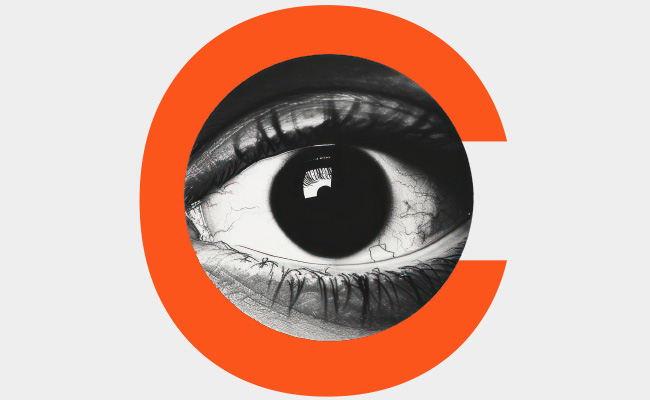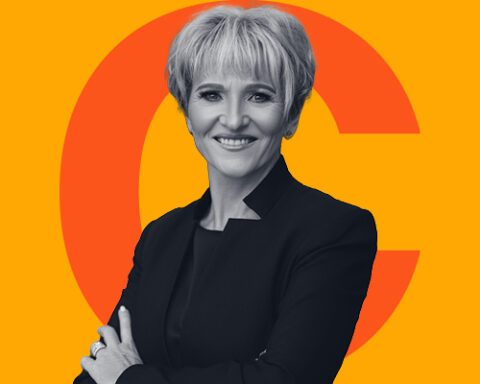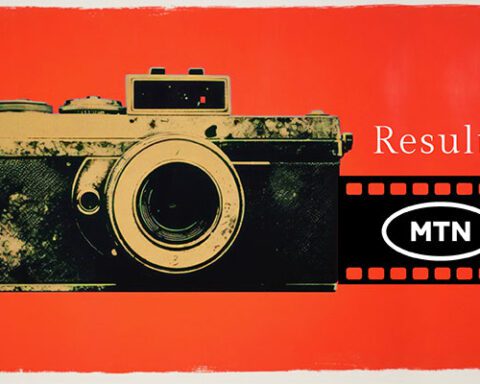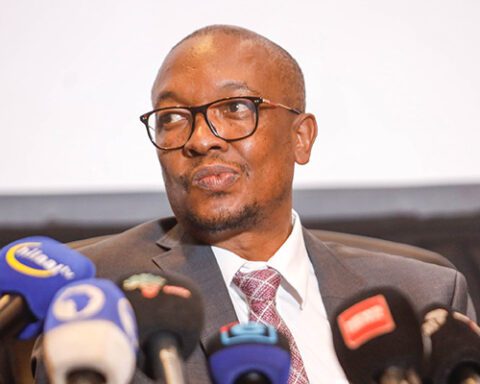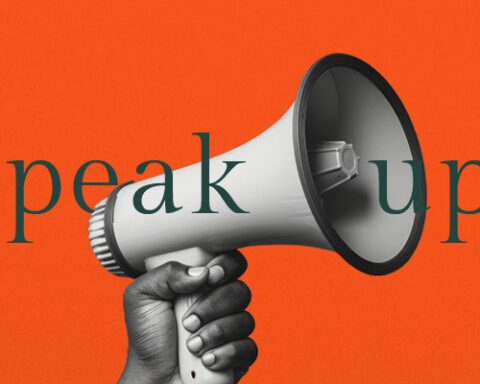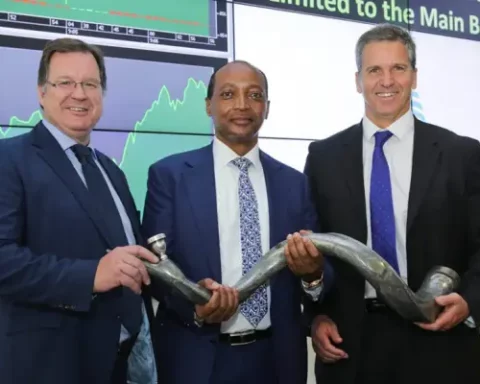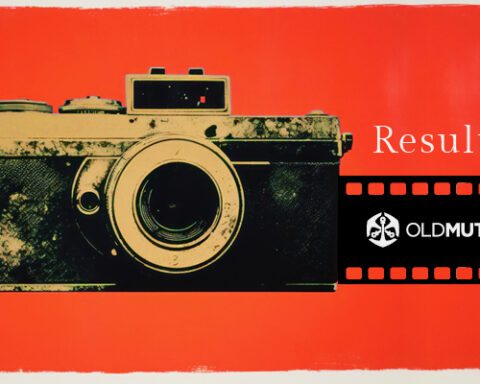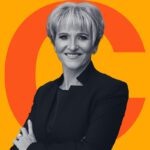It’s a stunning turnaround for Purple Group – the owner of South Africa’s biggest retail trading platform EasyEquities – which has posted a pre-tax profit of R43.18m for the year ended August, from a loss of R46.7m a year ago. It means headline earnings per share of 1.77c a share from a loss of 2.05c a share last year, with revenues up 45% to R400m for the overall group.
It also validates this year’s share price recovery: Purple stock at 110c has gained 76% for the year, though it’s still only a third of the R3.37 it hit in January 2022. Talk about a slow grind …
Currency spoke to CEO Charles Savage on the results.
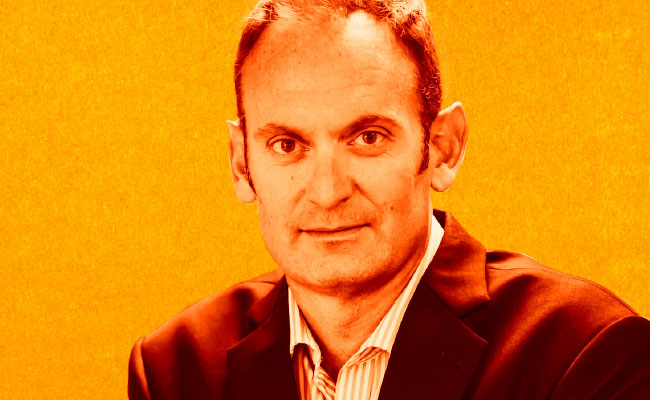
Is this turnaround almost solely attributable to last year’s introduction of the monthly Thrive fee?
The fee was introduced to drive and shape positive investment behaviour and it’s had a couple of impacts across the group. It’s had a very strong economic impact – it’s produced a substantial amount of revenue that now holds up part of the EasyEquities income statement. But the economic impact was felt in two ways [because] it fundamentally did change the behaviour of our investors.
From February through to today every single month has been a deposit record for that month, looking backwards. And it culminated in August being the biggest deposit month we’ve ever had across the group.
So, investors said: “If I can avoid fees by being a better investor,” they did, and so they pitched up on average 30%-40% more often; so they made 30%-40% more deposits than last year.
But the other impact was on education. In one example, we did a crypto course in April and 5,500 people took the course and completed it in one day. And the impact of education is also an economic impact because, as customers educate themselves, they do more with the platform and empower themselves.
Overall, deposits were up 25%. Was that mainly retail customers?
It was all retail. Retail deposits were up 27% and institutional deposits were down 2%. Retail customers have shown extraordinary resilience, because if you think about this period, nothing changed versus the same period the year before other than the introduction of Thrive. We got an interest rate cut very late in the financial year so we can’t say that a 25 basis point (bp) cut has made a difference.
It means retail customers found 25% more money to invest at the end of a very, very trying economic cycle where we’ve all been under huge pressure, so they deserve a round of applause.
The increase in active clients, in contrast, was more muted – it was up by about 10% to 991,320. Is that not slower than it’s been in the past?
We made a decision very early on in the financial year that our marketing money wasn’t delivering customers – i.e. it didn’t matter how much we spent on marketing, it didn’t change the number of people who arrived. And with some hindsight, if they don’t have money to invest, it doesn’t matter how much money you throw at them – they’re not going to invest. So we spent less on trying to acquire customers, which meant that we acquired fewer customers. As the economy improves, our level of marketing and effort around driving registrations is going to increase; as interest rates come down, you’ll see us more and more, and I expect we can get that registration number back up to about 20% in the years ahead relatively easily.
Yet you still have more than 2-million registered users. How are you going to convert them to being active users?
The data tells us that 95% of conversions happen within the first 12 days. So anyone who doesn’t convert then is a very tough opportunity later. Interestingly, though, we are getting better and better at converting customers who arrived a long time ago and I think there are two reasons behind that. The one is that there is a trust factor in the brand that is growing, where someone might have registered to see what it is but hadn’t trusted it with their savings. So I think we’ve got the opportunity to constantly go back to that audience and tell them who we are and say: by the way, we’ve been around for 10 years, we’ve got R62bn in assets under management and there are 1-million customers doing this. And the second one is that we’re just getting better at managing those conversions, using better data and tools like AI.
The final point is that some people might have arrived expecting something we didn’t offer; but over 10 years the maturity of the business in terms of products and access to markets has radically transformed. So someone who registered three years ago wouldn’t have had access to European or UK shares, or US shares, or unit trusts. As you release new products, you have to go back to those people.
You make a point of highlighting your revenue-to-asset ratio – which is now 0.7% from 0.54% previously. What does that actually mean?
If you’ve got assets on your platform, it means nothing if you’re not extracting at the very least an amount of value out of that asset base, in percentage terms, year on year. Our goal is that, because we’re delivering more products and services, we want to do more things for you – like life insurance or your RA etc. So not only are we growing assets, but we’re growing the efficiency and delivery and conversion of our customers’ usage and appetite for our products – so that’s what our number indicates.
Is there an ideal ratio?
I think at 70bp that’s really good. The asset management industry probably averages 70bp to 80bp. For us, it’s more about for every product we deliver, we deliver it at a fair margin. And that margin we extract doesn’t disrupt what we are trying to create, which is investors who are successful at creating value for themselves. So, you don’t want that number to be 5% for example because that would mean extracting too much. I think between 70bp and 100bp would be absolutely perfect. That would be an amazing outcome, but I’m very happy with where we are.
Revenues were up across all products – except EasyProperties, despite an increase in clients and assets there. Why?
It’s essentially an asset manager, and in order to look after those assets it has a relatively high, fixed-cost base. And so it will be profitable once its reach is about R1bn in assets, and it’s halfway there. Once it does reach that mark, about 80% of revenue will flow straight to the bottom line. It’s like building an ETF issuer: you’d never be profitable with just R500m in assets.
The cost to service customers was also up – though by 1.9% only. Should it be coming down further? Bearing in mind that five years ago it was R393 …
We’re obviously operating in an inflationary environment and that affects all our costs, and when you’re in this environment increases are high – and you can’t tell your staff no increases just because our cost to serve needs to go down. But the number is important because it’s the number we’ve got to get to for customers to be profitable on the platform. We reference that number against our peer group and we look at things like Robinhood and its cost to serve is multiples of ours, in dollars. It’s a couple of hundred dollars a year.
In the UK there’s a company called Freetrade, which is very similar to EasyEquities and its cost to serve is more like £500. So our cost to serve is best in class but that doesn’t mean we’re going to be lazy with it. I think there is another 20%-30% of efficiency that will be delivered through the implementation of AI in the decade ahead.
The best in class is a crowd called Nubank, the biggest bank in Brazil, which is $1 a month – R240 [a year]. And it’s the best in the world, and it has 60-million customers. We track it: I read its annual report regularly to see what it’s doing. We’ve done a good job of it, but we have to remain laser focused on that number because if you want to guarantee future profits you just reduce your cost to serve. So there are two attack strategies: improve revenue, reduce the cost to serve.
On that point – will that come with the launch of new products next year?
If we reflect on this year: we talked about Thrive but we didn’t talk about EasyCrypto, which had an astounding year; Rise had an astounding year and so did EasyEquities. So where previously you could have said the income statement was held up by EasyEquities, you’ve now got this diversified grouping of businesses that are all making very strong and growing contributions.
In the year ahead I expect all of those businesses to continue to deliver the levels of growth they’ve experienced in the past 12 months, but I don’t expect the introduction of new products will impact the income statement in the next 12 months. You’ve got to lay those products down for the next two, five, 10 years – so 80% of what we need to achieve in the next 12 months is right in front of us.
Are you optimistic about next year?
I’ve had these results for two weeks now, so I’ve had time to reflect on them, but I can’t tell you how proud I am. When I look forward, I’m filled with excitement for a whole lot of reasons: one is I think Brand SA is in the best place we’ve seen it for decades, and that can only be good for equities and a business like ours. Two, there’s no doubt that the Reserve Bank is going to let go of interest rates at a more rapid pace; and that’s going to be great for the consumer and our customer base. And then, three, in a very tough market environment we’ve built a much more resilient business than we had three years ago. And we’re walking into an environment where we’ve got a market setup where everything looks … great.
The writer owns shares in Purple Group; her average entry price is R1.33.
Sign up to Currency’s weekly newsletters to receive your own bulletin of weekday news and weekend treats. Register here.
